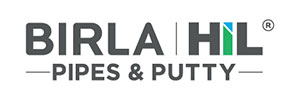Common Effluent Treatment Plant
Overview of Common Effluent Treatment Plant
Common Effluent Treatment Plant (CETP) is the process of collecting, conveying, treating, and disposing of the effluents from industrial estates. The effluent includes industrial wastewaters and domestic sewage generated from industrial plant. This concept of CETP helps small as well as medium scale industries to discard/dispose of their effluents. Common effluent treatment plants had been mounted and are in operation at several business clusters in India. They serve to lower effluent treatment expenses, offer higher collective treatment, and decrease land expenses for small-scale business centers that can’t have enough money for a man or woman treatment plants. However, the pollution that we see in today’s world will be increasing day by day.

Frequently Asked Questions
It is a facility that collects wastewater from multiple facilities and treats it to a specified quality or quantity. The process is mandatory for many industries, but they do not have the resources, space, or expertise to build their own Effluent Treatment Plant. Luckily, many CETPs are already established and ready to treat your wastewater.
This treatment plant is typically used for industrial effluents, but it can also be designed for domestic wastes. Most of these facilities are not designed to reuse potable wastewater, and the regulations surrounding this process are extremely stringent. However, some of these facilities can still treat non-potable wastes. Moreover, these plants are a good option for small industries that meet stringent standards.
The main purpose is to handle the effluents of multiple facilities. They can also be designed to treat a variety of waste streams. In addition, a CETP can be used for industrial wastewater. Because they treat wastewater from several sources, they can meet strict guidelines for reuse. They can also include remediation measures before disposal. These systems are extremely efficient.
A CETP is an industrial waste management facility for treating wastewater from a single source. Small to medium-sized industries generally use them. This type of facility is more cost-effective for a small business, as it requires a large investment, power, and specialized manpower. However, it is still not feasible for small businesses.
The common and combined effluent treatment plant (CETP) is designed to collect and treat wastewater from several sources, resulting in a high volume and quality. While the environmental health of an economy needs to treat wastewater, many industries are unable to install their Effluent Treatment Plants. They may lack the budget, space, and specialized manpower to build such a facility.
A CETP collects and treats waste from various facilities. The effluent from industry is regulated in many jurisdictions, and proper treatment is required for compliance. However, many industries do not have the resources, land, or expertise to build their own Effluent Treatment Plant. Therefore, they turn to a CETP to help them meet their effluent discharge standards.
A CETP is a central treatment facility that handles the effluents of multiple facilities. This type of plant can handle various effluent types and can be used to treat wastewater before disposal. A CETP can reduce operating costs and increase the rate at which treated wastewater is recycled and reused. Its use of chemicals can minimize the costs associated with remediation and the removal of pollutants.
Small and medium-sized industries can build their treatment facilities and dispose of the treated wastewater in the sewers. Large-scale ETPs require land, electricity, and a specialized workforce and are expensive to produce. Therefore, many small and medium-sized industries can’t afford to construct their own Effluent Treatment Plant. With a CETP, they can get the treatment they need to meet regulatory requirements.
Small industries can also opt to build a CETP on their own. While a CETP is much more affordable than individual devices, it requires land for operations. Using a common ETP is also more economical for smaller businesses, and the benefits are apparent. A CETP reduces the regulatory burden on municipalities, particularly helpful for industries that fall into the red category.
The definition of effluent standard is the legal restriction on the discharge of pollutants into waterways from industrial and public facilities. It is based on the wastewater’s physical, chemical, and biological parameters. Each pollutant has a unique standard, which depends on the technology used to reduce its concentration in the industry. The Environmental Protection Authority sets the standards.
The effluent standard is a standard for the concentration of pollutants from a sewage treatment plant or industrial facility. This standard is a legal requirement for wastewater treatment facilities. These plants must meet the Effluent Standard to comply with the regulations. These standards are based on the maximum allowable inlet load for each type of facility, and they must meet these standards to be certified as an “accredited” facility.
The Effluent Guidelines are national regulatory standards for wastewater discharge from an industrial or municipal sewage treatment facility. The EPA issues regulations for industrial categories, such as food and beverage manufacturing and pharmaceuticals. These standards are based on the performance of the treatment technologies. If a plant fails to meet these standards, it must be replaced by the most effective conventional technology. If you have a sewage treatment facility, you may meet the Effluent Standard.
The basic difference between sewage and effluent is the method used to treat them. Effluent is water and human waste, while sewage is primarily water. Both types pose a risk to public health, and the difference is important to understand.
A major difference between the two is the treatment method. Sewage is wastewater that is generated in the home and carries faecal matter. On the other hand, the latter is considered effluent and is the liquid waste that passes through the sewers. In general, a four-person household produces about 400 to 500 liters of sewage per day.
Sewage is a mixture of water and solid waste. In the natural world, sewage flows into a river or other water bodies without treatment. On the other hand, effluent, which has been treated and is released into a waterway, is a waste fluid that contains no human excrement. It is called the “flow” of the sewage treatment plant and is a product of the treatment process in a city.
Sewage and effluent are a subset of wastewater. While both types of wastewater contain pollutants, the difference in treatment makes them highly important. It is a more effective way to manage the amount of water a community generates and needs to dispose of. However, dilution does not prevent pollution. Wastewater must be treated to be disposed of properly, and this is a common mistake made by homeowners.
Client testimonials
Our Clients
















